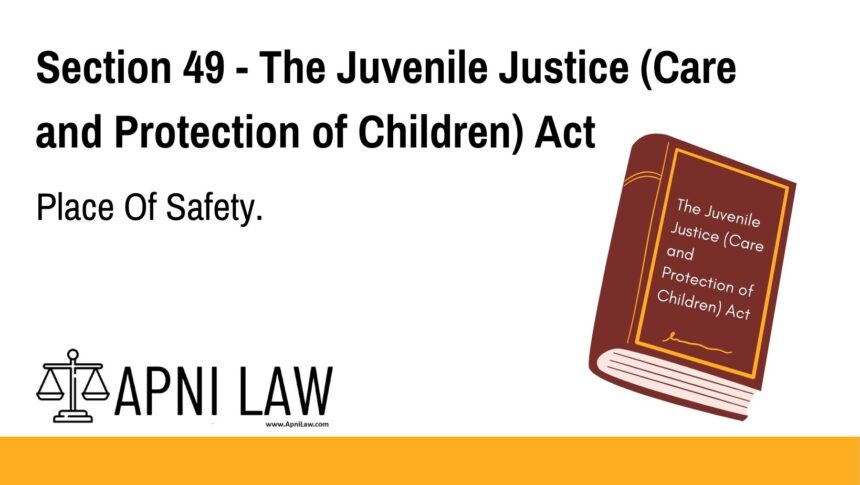Code: Section 49 — Place of Safety
(1) The State Government shall set up at least one place of safety in a State registered under section 41, so as to place a person above the age of eighteen years or child in conflict with law, who is between the age of sixteen to eighteen years and is accused of or convicted for committing a heinous offence.
(2) Every place of safety shall have separate arrangement and facilities for stay of such children or persons during the process of inquiry and children or persons convicted of committing an offence.
(3) The State Government may, by rules, prescribe the types of places that can be designated as place of safety under sub-section (1) and the facilities and services that may be provided therein.
Explanation of Section 49
Section 49 of the Juvenile Justice Act mandates that each State must establish at least one “place of safety.” These facilities are meant for:
- Individuals above 18 years of age
- Children aged 16–18 years who are either accused or convicted of committing heinous offences
The law ensures that such individuals are not placed in regular jails or adult correctional institutions. Instead, they are kept in a secure and supervised environment where they can still receive rehabilitative services.
Importantly, the law requires that children awaiting inquiry and those already convicted must be housed separately. This segregation ensures that pending cases do not interfere with the rights of those not yet proven guilty.
Furthermore, the State Government is empowered to create detailed rules. These rules will define which places can qualify as a “place of safety” and what facilities—such as counseling, vocational training, and security—must be provided.
Illustration
Example: A Safe Alternative to Prison
Rahul, a 17-year-old, is accused of a heinous offence. The Juvenile Justice Board decides not to send him to an observation home due to the severity of the case. Instead, he is sent to a designated place of safety. There, he is kept under supervision, away from convicted individuals, and receives counseling and basic education during the inquiry process.
Common Questions and Answers on Section 49
1. What is a “place of safety”?
A place of safety is a secure facility established by the State to house individuals aged 16–18 who are accused or convicted of heinous offences. It can also accommodate adults over 18 under certain conditions.
2. How is it different from an observation home or special home?
Observation homes are for temporary custody during inquiries, while special homes are for rehabilitation of convicted children. A place of safety specifically houses children in conflict with law accused or convicted of heinous crimes, offering higher security and specialized care.
3. Who decides to send a child to a place of safety?
The Juvenile Justice Board or a Children’s Court makes this decision, particularly in serious cases involving heinous offences.
4. Are all children kept together in these places?
No. Section 49 mandates separate arrangements for those under inquiry and those already convicted to ensure fairness and safety.
5. What services are provided in a place of safety?
The State Government sets rules that may include counseling, education, vocational training, healthcare, and secure accommodation.
Conclusion
Section 49 serves a critical purpose within the juvenile justice system. It ensures that children accused or convicted of serious crimes are placed in secure, rehabilitative environments instead of regular jails. By creating dedicated places of safety, the law balances the need for public protection with the child’s right to reform.
For more detailed articles on juvenile justice and child protection laws, visit ApniLaw.








